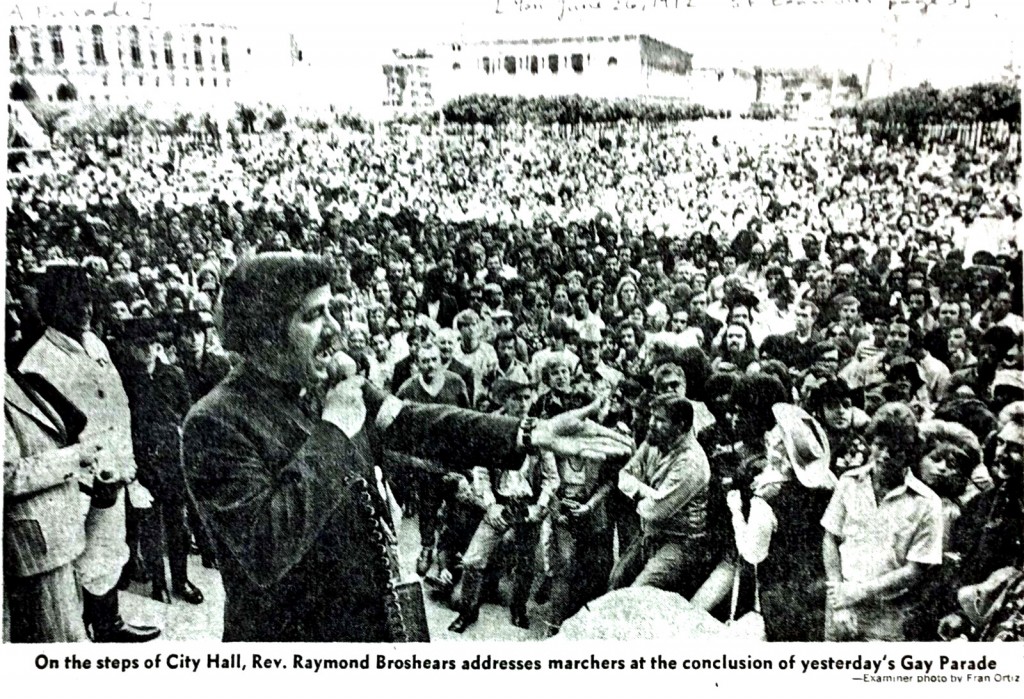
San Francisco Examiner.
An equal opportunity troublemaker, Broshears eventually pissed off nearly everyone who entered his orbit regardless of race, religion, or sexual orientation. Due to a disagreement with fellow Gay Pride parade organizers, the following year (1973) Broshears staged his own gay pride event in competition with the official one, which in due course led to a mini-schism within the San Francisco gay rights community. (Hail Eris! All Hail Broshears!)
Although a polarizing figure, Broshears was a tireless advocate of the homeless, poor and elderly, operating a community center in the Tenderloin called “Helping Hands” that provided free lunches for senior citizens. Other volunteer efforts included an annual Christmas event he organized for patients at Fort Miley Hospital called the “Gay U.S.O. Show.”
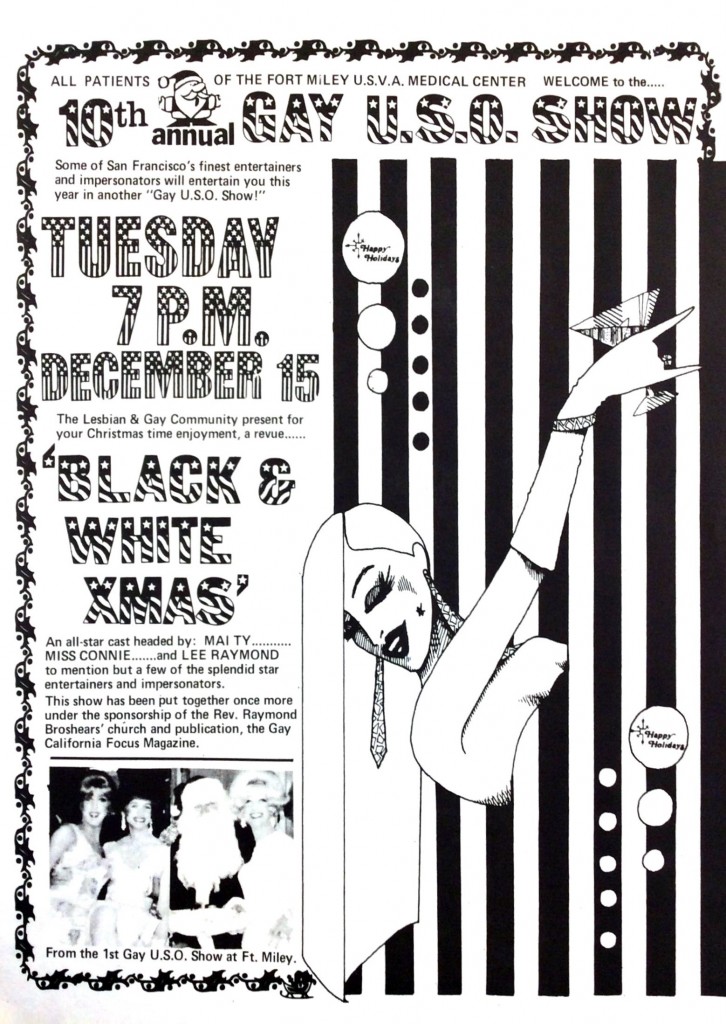
To publicize his political activism, Broshears started a newsletter called The Gay Crusader and was continually firing off letters to political figures of the era—from Harvey Milk to Dianne Feinstein to George Moscone—and damn near anybody else who came into prominence during the late-60s and 70s San Francisco political scene. More often than not, these letters (found in abundance in the Broshears Archive at the GLBT library) consisted of long-winded rants not easy to track (even for someone like yours truly who is sort of a kook-whisperer). The Broshears Archive includes this letter from Harvey Milk, who seemed equally mystified by whatever Broshears may have been getting himself wrapped around the axle about.
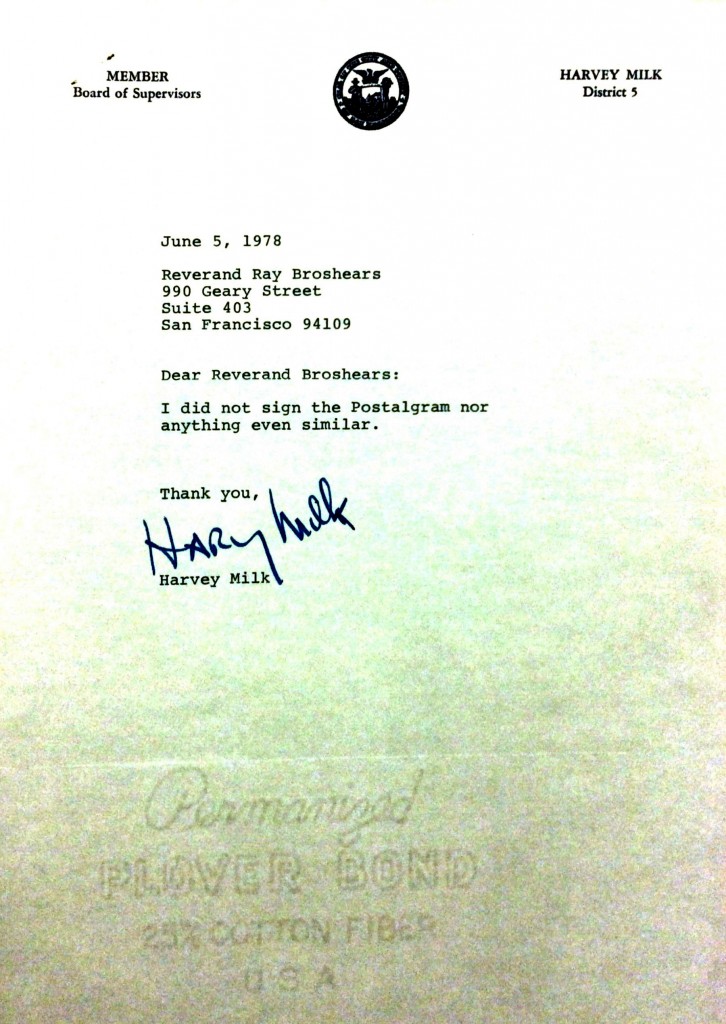
The Raymond Broshears Papers.
Courtesy of Gay, Lesbian, Bisexual, Transgender Historical Society.
Broshears enjoyed his fifteen minutes of fame when he formed a group called the Lavender Panthers in response to gay bashing incidents that occurred in San Francisco during the early-70s. This led to a feature story in the October 8, 1973 issue of TIME Magazine describing the Lavender Panthers as a “stiff-wristed team of gay vigilantes… The basic band numbers 21 homosexuals, including two lesbians who are reputedly the toughest hombres in the lot.” The Lavender Panther’s mission, Rev. Broshears informed TIME, was to strike terror in the hearts of “all those young punks who have been beating up my faggots.”
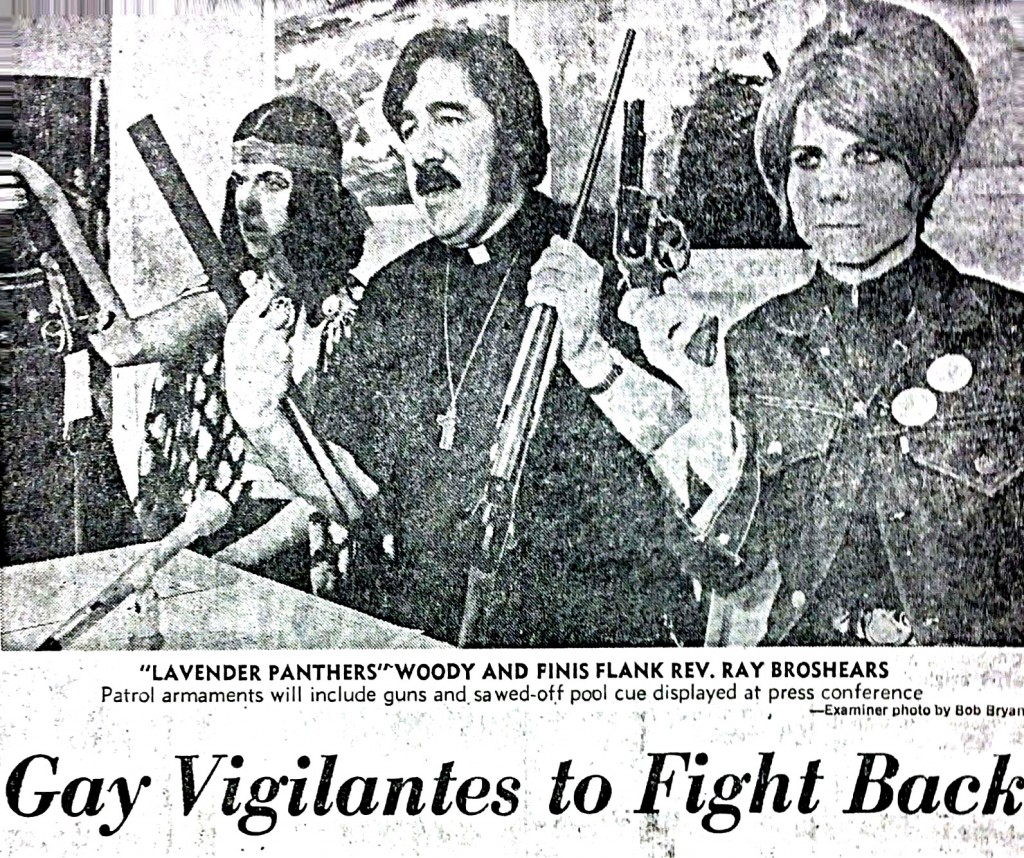
San Francisco Examiner.
The Lavender Panthers used the same sort of agitprop that the Black Panther Party became infamous for: openly carrying fire arms and training in hand-to-hand combat tactics, such as the martial arts, although much of these activities appeared to be a PR stunt to generate a media buzz, particularly in regards to the Lavender Panthers.
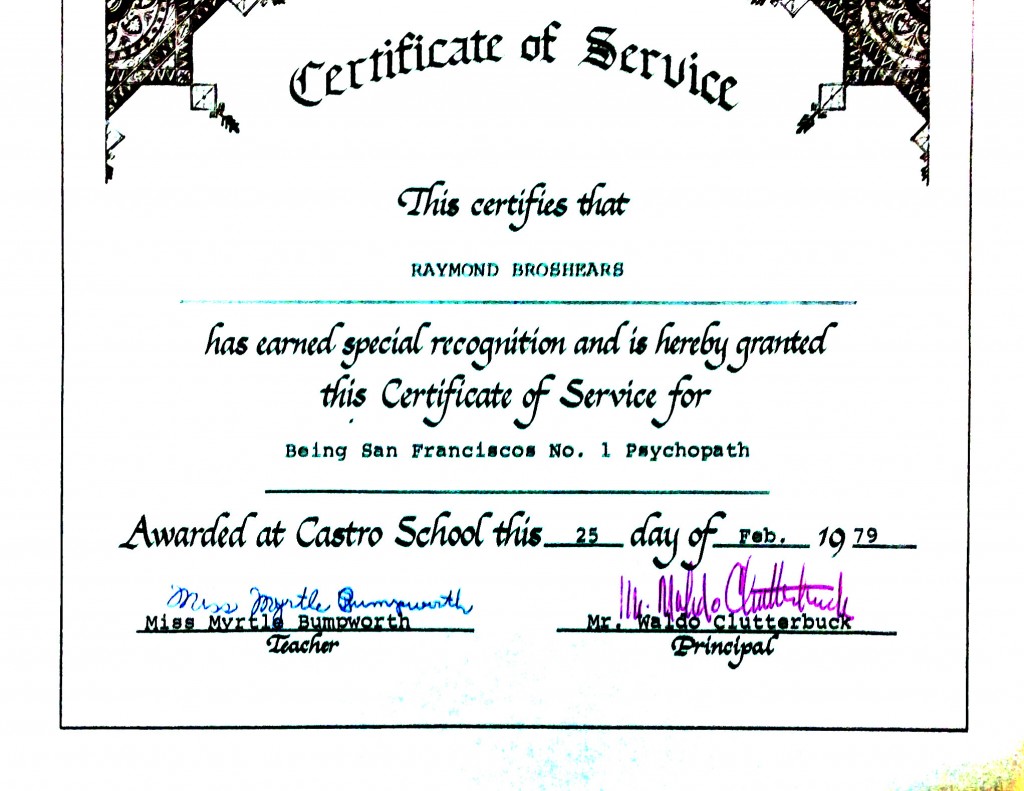
presented to Rev. Raymond Broshears on February 25, 1979.
Broshears resided in a hotel in the Tenderloin, and in his room he maintained a printing press for various newsletters he published over the years that included Light and Understanding; The S.F. Crusader (later called The Gay Crusader), and his last production, Focus.
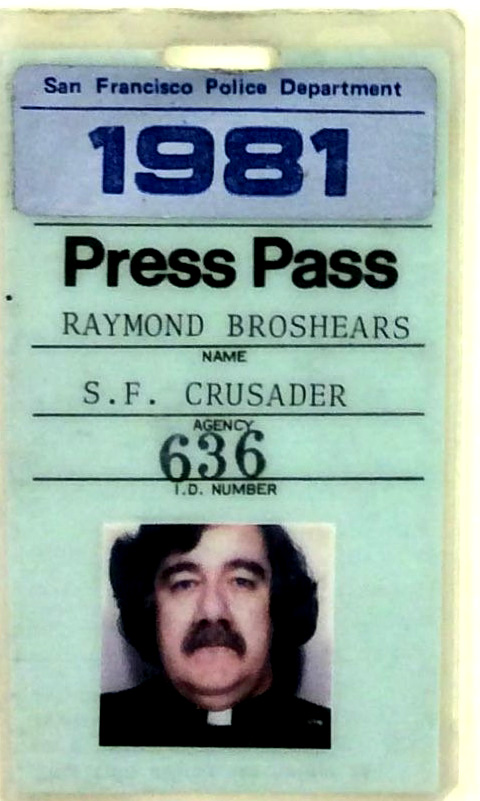
According to a lengthy Broshears’ obit in the January 14, 1982 edition of the Bay Area Reporter,
“A former Golden Gate Business Association official told Bay Area Reporter that many Gay businesses felt they were being extorted by Broshears because they would not advertise in his newspaper. He revealed that in 1979 some GGBA officials and others met to share their knowledge of what they saw as Broshears’ continuing and costly harassment, but they did not know of any legal action they could take. One obstacle they faced was attorney B.J. Beckwith, who was constantly pressing cases against them for Broshears…. Beckwith helped Broshears sue numerous private parties and some businesses, including Bay Area Reporter, on a variety of charges. They were considered by many to be “nuisance” suits that involved the hiring of attorneys by those sued while Broshears enjoyed Beckwith’s services gratis…
“Local Gay businesses were regularly affected by Broshears’ behind the scenes reporting to the police and city agencies. Although he attacked city officials for crackdowns on sex-related businesses in his newspaper, he had his own continuing crusade. Gay bars, bath houses, sex clubs, adult book stores and most recently video cassette stores were constantly threatened by Broshears’ challenges to their permits and licenses. He telephoned and wrote city officials and police officials, plus appeared (often as the only complainant) at hearings to revoke or deny permits and licenses…”
“In 1978, Broshears personally and somewhat gleefully ‘exposed’ an alleged male prostitution operation in the city. Many Gay activists never forgave Broshears for this act because it resulted in the arrest of the popular Jack Campbell, an official of the Club Baths chain and a major financial supporter of Gay rights over many years…”
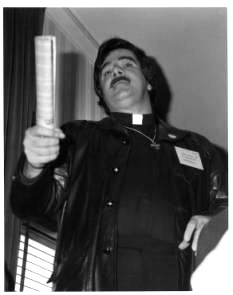
In January 2018, I appeared on Radio Misterioso with Greg Bishop to discuss our new book ‘A’ is for Adamski: The Golden Age of the UFO Contactees (Available now in a Black & White version or a Full Color version!).
During our conversation, we referenced Rev. Broshears and his connection to famed ufologist Dr. Frank Stranges, mentioned in Part 00003 of this startling series.
In the course of our discussion, I noted how I’d recently happened upon an episode of NPR’s Radio Lab concerning Oliver Sipple, a tragic figure who reluctantly became a national hero over night. On September 22, 1975, Sipple was standing in a crowd of spectators outside of the St. Francis Hotel in San Francisco—awaiting an appearance by President Gerald Ford—at which time Sara Jane Moore pulled a .44 caliber Charter Arms revolver out of her pantsuit and fired a single shot that missed the President and ricocheted off a nearby wall. When Moore attempted a second shot, Sipple grabbed her arm. As Sipple recalled: “I saw [her gun] pointed out there and I grabbed for it… I lunged and grabbed the woman’s arm and the gun went off.”
Sipple made every effort to avoid the limelight, mainly because he felt he wasn’t the hero everyone was making him out to be. However—when he arrived home that evening—Sipple was met by a gaggle of reporters who had learned he was a former Marine that had served in Vietnam. Sipple told the reporters not to mention that he was a vet, and added that he didn’t really consider himself a hero. But as much as Sipple attempted to slip into the shadows, the national media quickly latched on to his story, and the following day he was the front page headline in newspapers across the country, basically presented as a war veteran who had heroically saved the President’s life.
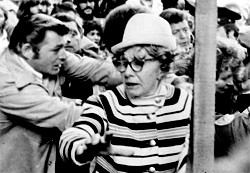
Initially, Sipple was hoping his new found fame would blow over in a day or two; that he’d simply be treated to a round of drinks at a local tavern and be done with all the hoo-hah, but a couple days after the story broke, prominent San Francisco Chronicle columnist Herb Caen received a message on his answering machine from none other than Harvey Milk, who informed him that Sipple was an active member of the San Francisco gay community. This was during the timeframe when Milk, with great gusto, was encouraging fellow gays to come out of their respective closets. This, it appears, was the main motivation why Milk contacted Caen, along with an agenda to place stories in the media that portrayed the gay community in a more positive light.
Sipple, it turns out, was long time pals with Harvey Milk, and actually worked on one of Milk’s political campaigns. Although Sipple was a guy who clearly wanted to stay in the closet to a certain extent, the gay activist movement of the early 1970s swept up everyone in its path, and unfortunately for Sipple, he got caught up in the shifting winds of a generational change he didn’t have the emotional tools to deal with.
Broshears, independent of Harvey Milk, also called Herb Caen to inform him that Sipple was gay. Broshears, like Milk, thought it would help break the negative stereotype of gay men as limp-wristed sissy-boys who would never raise a finger to save the life of a President. To this end, it’s in no way an understatement to suggest that Sipple most likely saved President Ford’s life. Geri Spieler’s Taking Aim at the President: The Remarkable Story of the Woman Who Shot At Gerald Ford details how Sara Jane Moore’s trusty .44 caliber had been confiscated by the SFPD a day before her assassination attempt, and how the following day Moore purchased a .38 caliber Smith & Wesson. Fortunately for Gerald Ford, the gun sights on the Smith & Wesson were six inches off the point-of-impact, causing Moore’s first shot to just narrowly miss Ford’s noggin. Her second shot would have been at even closer range, and Moore probably wouldn’t have missed that one, had not Sipple intervened.
The revelation of Sipple’s sexual preference soon leaked to other reporters via Caen, and once the genie was out of the bottle Sipple’s fifteen minutes of fame had been given another shot in the arm as national media outlets seized on part two of Sipple’s story, and this news eventually made its way to his parents and friends in Detroit, who were unaware of Sipple’s sexual proclivities, which was the main reason he’d been trying to keep under wraps to begin with. Afterwards, Broshears became a witness in a defamation lawsuit filed by Sipple against the San Francisco Chronicle, claiming that the newspaper had shared his private information against his wishes.
The Radio Lab episode I mentioned featured an interview with Oliver’s nephew, a fellow named George Sipple. I didn’t realize it at the time, but the very same George Sipple had contacted me in August 2016 with some Discordian-related information concerning CREEM magazine.
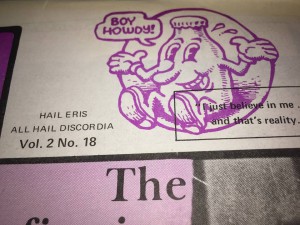
'Hail Eris. All Hail Discordia.'
These are the sort of synchronicities that always seem to happen to me, Hail Eris!
Oliver Sipple was never really the same after the assassination attempt on Ford, not to mention when the personal revelations of his private life became a national story. These dramatic events no doubt contributed to Sipple slowly drinking himself to death by 1989.
As for Rev. Broshears’ demise, the January 14, 1982 edition of the Bay Area Reporter noted that: “The most controversial Gay personality in San Francisco was found dead in a hallway of his 990 Geary Street apartment on Sunday night [January 10]… of a cerebral stroke.” Broshears was 46 years of age.
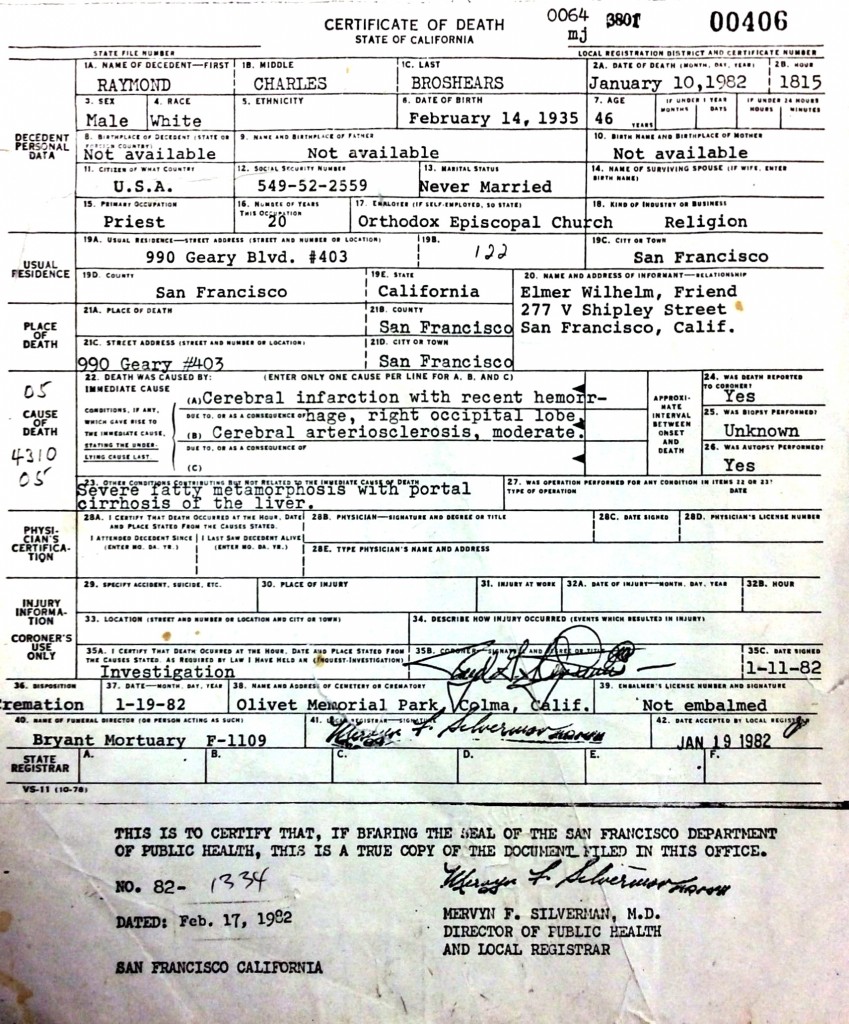
Subsequent rumors surfaced that Broshears died of HIV, although this has never been confirmed. Broshears passing was just after the discovery of AIDS became public, so such conjecture may have certainly some substance.
In our next and final installment of this series, we’ll explore some recently discovered FOIA files pertaining to the one and only Reverend Raymond Broshears.
Stay tuned!
2 replies on “The Raymond Broshears Files Part 00005: The Gay Crusader”
This is a great series. Have you considered writing a Broshears bio?
Thanks, Mike. Maybe down the road I’ll do a Broshears bio…part of the challenge is tracking down enough people to interview who knew him.